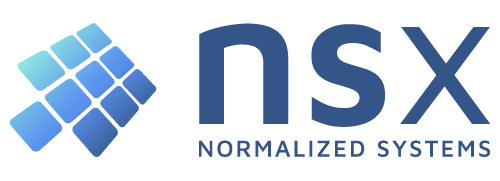
Normalized Systems development tools
The NSX Platform is a suite of tools to develop software applications based on Normalized Systems Theory.
Tooling
The schematic drawing below represents how the NS platform enables developers to interact with the four dimensions of variability: analysis models, skeleton versions, utility frameworks, and custom craftings.
The models can be specified and authored in the NS Modeler and/or the Micro Radiant, or even directly in the XML files that are used to store and exchange the models. The skeleton versions and utility frameworks can be specified in the Micro Radiant, or directly in XML.
Expansion of the skeletons, including harvesting and re-injection of the custom craftings, can be activated from within the Micro Radiant, from a command-line interface (CLI), or from a standard IDE like IntelliJ. Such an IDE, or basically any editor that developers use for coding, can also serve to program the custom code.

The Prime Radiant integrates information from every step of the development lifecycle, allowing you to actively use that data to make informed decisions.
By managing deployment, dependencies and vulnerabilities information, you are able to have a clear and efficient overview of your complete application landscape.

The Micro Radiant provides a unique overview and control over the various information systems, decoupling the four dimensions of variability: analysis models, skeleton versions, utility frameworks, and custom craftings.
Moreover, it is the Micro Radiant who unlocks the continuous regeneration and rejuvenation that leads to the unseen evolvability of NS software.

Based on the data and flow models, the NS Expanders will expand the various elements, and generate the software skeleton of the information system.
This application skeleton is highly evolvable, as it is guaranteed to be free of combinatorial effects.

